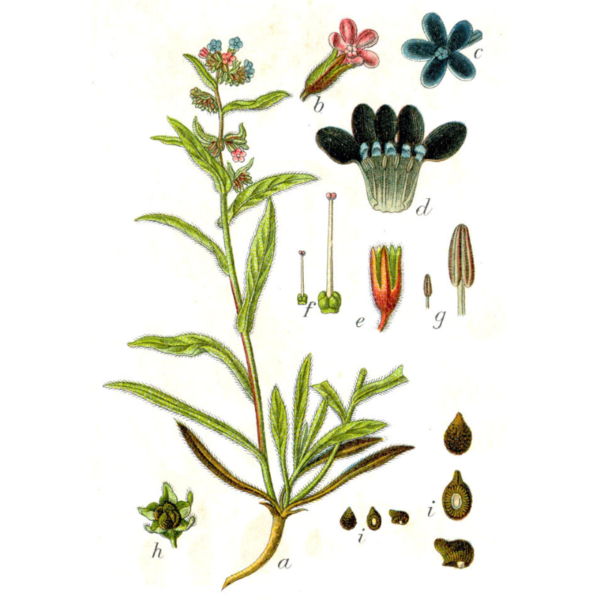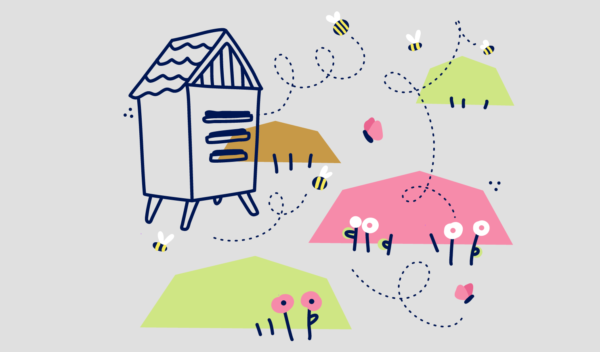A former dyeric plant and a wild vegetable with dark blue flowers. It remained a valuable medicinal herb and a source of tannins for craftsmanship. Currently the common bugloss is one of the most popular honey plants. Wild, non-cultivar seeds.
SKU: N024
21,00 zł – 87,00 zł
Polish name: medicinal dyer
Latin name: Prunella vulgaris
Family: the borage family (the forget-me-not family) Boraginaceae
Status in Poland: native or permanently established plant
The common bugloss is a short-lived perennial that forms a rosette of leaves in the first year. Flower shoots are strongly tomentosed, erect, medium or high (0.3-1.0 m), and alternately foliaged.
Two types of leaves (basal and stem) are also very rough to the touch. The basal leaves are characterized by having long stalks and an oblong shape. The stem leaves, on the other hand, are characterized by a lanceolate, linear shape, and moreover, they’re sessile.
Common bugloss flowers are characterized by five-part symmetry, division into calyx and corolla, as well as homogamous blooming, and thus pollination. The fused-petals corolla is equipped with special tomentosed fornices that block the pollen robbers from entering the torus of the flower. A very characteristic feature of bugloss is a clear change in the shape and color of the flower in the course of blooming. Before pollination, the calyx is small and tubular, after pollination it becomes large and bell-shaped, sometimes almost circular. The corolla is almost red before pollination, while after it becomes blue or navy blue.
The fruit will be a typical for the borage family mericarp, characterized by a wavy yet papillary surface.

The common bugloss requires sunny locations. Perfectly tolerates barren dry soil, although it prefers fertile, even overfertiled.
On bee pastures and flower margins in orchards, it is sown at a spacing of 10 cm by 40 cm. Denser sowing will not increase yield or nectarising at all.
As a species typical for gaps between paving slabs or rubble, it will perfectly cope with flower brick walls and dry alpine gardens.
The Polish generic name „dyer” owes thanks to its basic application in the past centuries, forgotten today. It was used to dye fabrics, drinks and food. The red dye obtained from it, called anchusin or alkannin, is still used today in the cosmetics industry, analytical chemistry, and microscopy.
In regions warmer than Poland, especially in the Mediterranean Basin, the main source of alkannin was, however, a distant cousin of the common bugloss: dyer’s alkanet (Spanish bugloss) Alkanna tinctoria.
An excellent and well-researched honey plant and pollen-bearing plant. From one hectare sown only with common bugloss, honey bees can collect about 40 kg of pollen, and then produce up to 170 kg of honey.
For centuries, beekeepers have valued it highly for its long flowering period, often from May to October.
